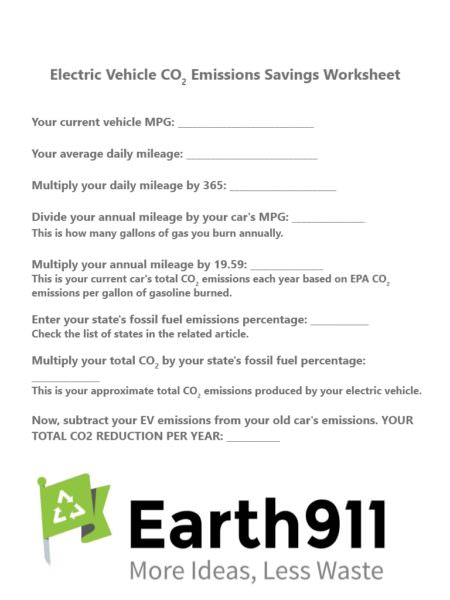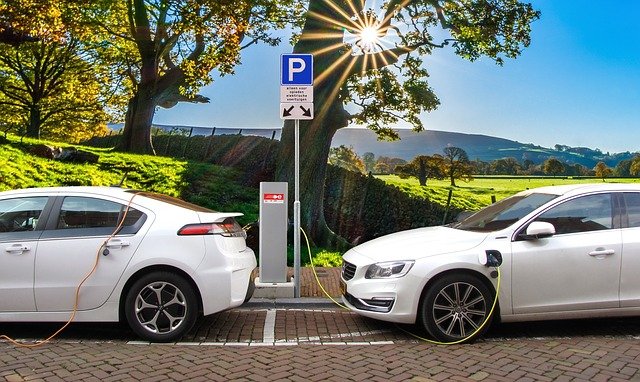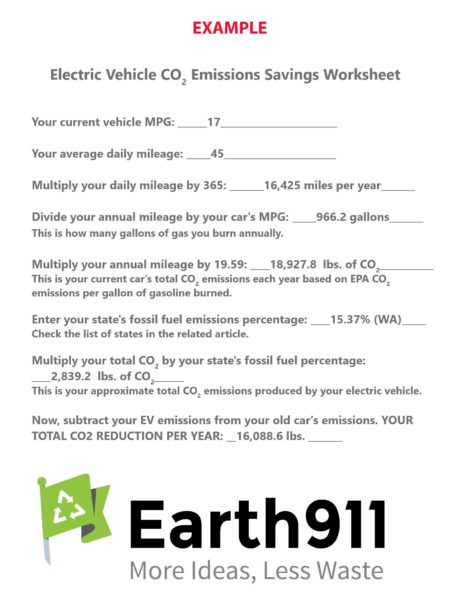More than 1.18 million electric vehicles were rolling along roads and highways in March 2019 and the major automakers have announced aggressive plans to introduce more EVs by 2025. Buying an EV has never been easier, though subsidies have begun to fall. In this article, we’ll explore how big a difference buying an EV will make to the environment and your pocketbook. The answer depends on where you live and how the electricity that powers your EV is generated.
Transportation contributed 29 percent of U.S. greenhouse gas in 2017 and light vehicles accounted for 59 percent of emissions — commuting produces 17.1 percent of CO2 emissions annually. But making the leap to electric from an internal-combustion engine vehicle can be a big expense. It’s one of the 10 annual investments we suggest you make to reduce your carbon footprint.
Buying an EV will make a big impact on your CO2 emissions, but it is also the most expensive choice you’ll make about your footprint. Consider switching to public transportation or biking, if you can’t afford to buy an EV. There are many solid affordable EV options from $29,000 to $69,500.

Savings in Hand
Before looking at the environmental benefits, let’s consider the financial benefits of an EV. Gasoline is expensive and, depending on the price of electricity in your region, the savings created by using electricity can be substantial. For example, if you commute the average distance in the United States — 7.6 miles each way as calculated across 96 metropolitan areas — your annual gasoline expense with a car that gets average mileage per gallon — 24.7 m.p.g. for 2016 model cars — will be approximately $421.53 based on October 2019 average gas prices. That’s $0.11 per mile to get to work.
By comparison, driving an electric vehicle costs approximately $0.033 cents per mile in locations where electricity costs $0.10 per kilowatt hour.
Add in driving for household and recreational driving, and it’s easy to see that an EV can cut your transportation expenses by $500 to $800 a year. And, because EVs have many fewer moving parts, the cost of maintenance is much lower.
Switching to an EV will reduce your travel expenses, but what about your carbon footprint?
Electric Generation Makes the Difference
Calculating the environmental benefits of an EV is not simple because every city and county has different methods of generating power. If your source of electricity is generated by burning coal, natural gas, petroleum, or wood, there is less environmental benefit to switching to an EV.
But look beyond the state where you live when deciding about an electric vehicle. Individual utilities may be sourcing their electricity from renewable resources. You can check for green energy sources at Green-e.org, which provides information about certified renewable power available by state.
Worksheet
We’ve prepared a worksheet to help assess the potential carbon footprint reduction. Start by calculating your current internal combustion engine vehicle emissions. You’ll need to have the following information available:
- Your current vehicle’s mileage per gallon
- Your average daily driving distance, including commute and household travel
- Your state’s fossil fuel percentage (from the list below the worksheets)
Now, follow the steps in the worksheet below. Click the worksheet to download a larger version.
Example Worksheet
The example worksheet below shows that by switching from an internal combustion engine car that gets 17 miles per gallon and is driven 45 miles a day in the state of Washington, the potential annual reduction in CO2 emissions is 16,088.6 pounds. Please use the blank form above to calculate your CO2 savings.
The example worksheet represents a typical driver, believe it or not. The average American’s annual carbon footprint is 21.5 metric tons per year, or 47,399.4 pounds. In a state with a high level of renewable energy generation, a switch to an EV can drastically reduce that heavy impact on the Earth. In our example, switching from gas to electric commuting and travel eliminated 33.1 percent of the average annual carbon footprint. If you are in a state with less than 50 percent of its power sourced from fossil fuels, the switch to an EV will make a substantial difference.
State Fossil Fuel Percentages
Find your state in the list below and use the corresponding figure in calculating your EV CO2 savings.
The States of Play
Unfortunately, only 13 states generate less than half their electrical power from fossil fuels: Washington (15.37%), Vermont (19.22%), Idaho (20.32%), South Dakota (27.85%), the District of Columbia (28.70%), New Hampshire (29.72%), Oregon (31.33%), New York (40.46%), Illinois (41.03%), South Carolina (41.76%), Tennessee (43.41%), Maine (45.21%), and Kansas (45.51%).
In 20 states that generate electricity primarily from coal, natural gas, and other gases or petroleum, there is little direct benefit of switching to an EV. But if you can set up your own power generation with a solar install, you can pioneer your state’s progress toward sustainability.
Consumers have immense power to influence utilities to adopt renewable energy. If your power is dirty, start writing letters and make clear to your power provider that you want an electric vehicle — that you’ll increase your electricity consumption by switching from gasoline if they give you renewable energy. Sometimes, we have to decide to change our environment to make it more sustainable. That change starts with your decision to reduce your dependence on fossil fuels.
In the long term, renewable electric energy will drive the economy. Early EV buyers have made important inroads and now the auto industry has embraced electric as its future. When you buy your electric vehicle, know the benefits and how they can be improved. An EV is just one step in the journey to sustainability, but the biggest you can make with a single action.
This article was originally published on November 4, 2019
The post How Big a Difference Does Buying an Electric Vehicle Make? appeared first on Earth 911.










